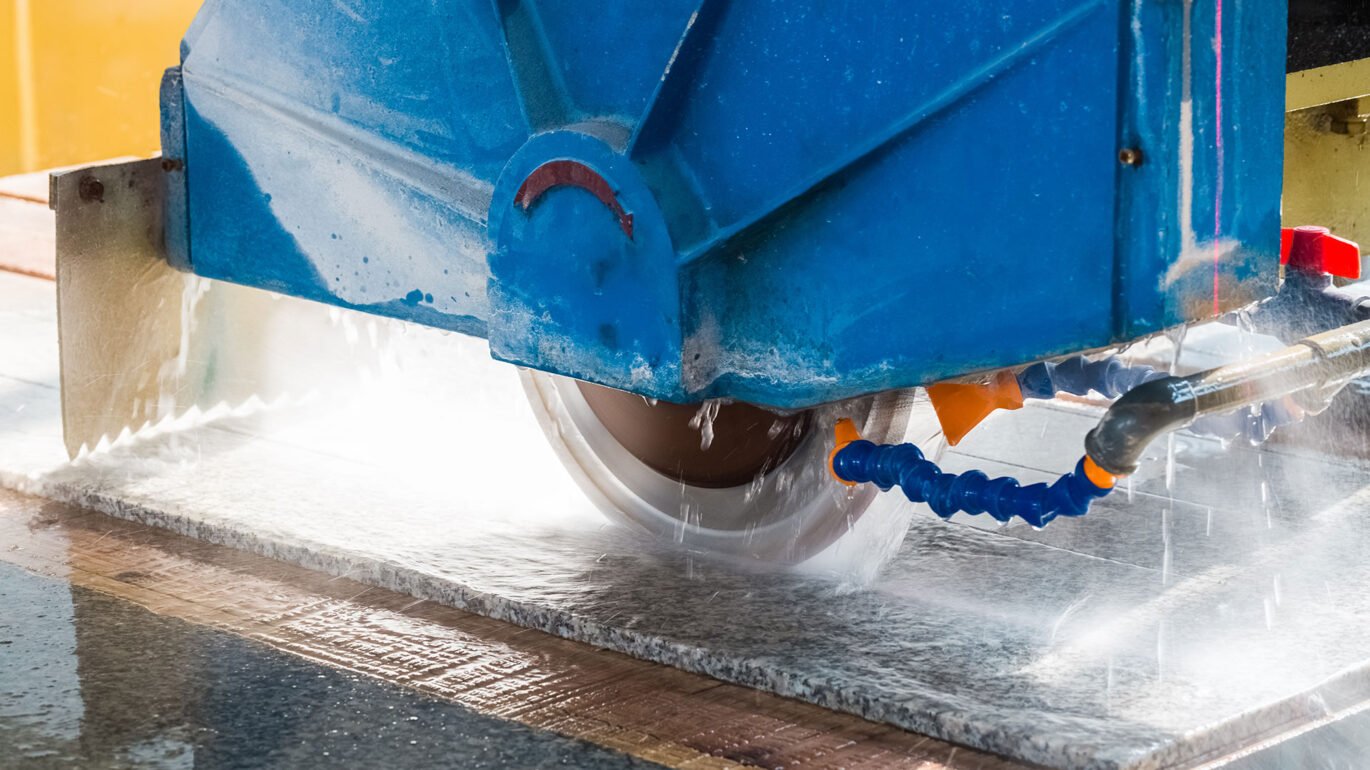As part of the Healthy Worker Healthy Workplace initiative, the Ministry of Labour, Immigration, Training, and Skills Development (MLITSD) will shine a spotlight on occupational disease. Over the next several months, the MLITSD plans to target respiratory protection in workplaces and asbestos in building structures; however, they will start by looking at exposure to crystalline silica. Focused inspections at industrial workplaces begin on October 31 and will run until December 30.
What are inspectors looking for?
Inspectors will look for evidence that employers have taken action to assess and address the respiratory hazards related to crystalline silica exposure.
Crystalline silica is most commonly found in granite and other types of stone, which are popular building materials. It’s also used in the manufacturing of glass products. Manufacturing operations that produce or work with these materials need to be aware of the hazards related to silica exposure.
“When you’re cutting granite for countertops, you have the potential for exposure to crystalline silica. You produce silica dust when you cut and grind these materials, and you might inhale the dust,” says Warren Clements, Specialized Services Lead (Occupational Hygiene). When silica dust particles become trapped in the lungs, it can lead to silicosis, which results in permanent lung damage. It can also lead to lung cancer. According to Cancer Care Ontario, exposure to crystalline silica in workplaces is the second leading cause of occupational lung cancer after asbestos.
Prepare your workplace for an inspection
- Assess – Complete a hazard assessment to determine if the job tasks performed by employees may expose them to silica dust. Ensure that the hazard assessment is done in consultation with the joint health and safety committee and ensure that it is documented in writing.
- Measure -If your assessment determines that your employees are exposed to silica dust, measure the exposure levels. Follow the requirements and exposure limits outlined in Ontario Regulation 490/09.
- Control – Implement engineering and administrative controls to limit exposure to silica dust. “These can be engineering controls, such as a ventilation system that pulls the dust away from the worker or a saw with water jets for wet cutting. These can also be work practices, such as the use of hygiene facilities,” explains Warren. “Some organizations have wash up procedures that involve changing clothes or showering before leaving the work area at the end of a shift.”
- Enforce – In workplaces where there is a risk of silica exposure, workers need NIOSH-approved respirators and must have training on how to properly use them. Gloves, protective clothing such as coveralls, and safety glasses can also help protect workers from getting silica dust on their bodies, in addition to protecting against other hazards.
- Monitor – You may need to establish a medical surveillance program for workers that includes all the necessary examinations and clinical tests. “There are very specific requirements for medical surveillance outlined in the regulation,” says Warren, in reference to Ontario Regulation 490/09. Employers should also review the Code for Medical Surveillance to ensure they are in compliance.
How WSPS can help
Consulting
Connect with a consultant to find out more about these services from WSPS’ Occupational Hygiene specialists.
Training
Resources
- Guide to Silica in the Workplace
- Workbook for Designated Substances Assessments
- Protecting Against Respiratory Hazards
Webinar
- Safety Connection – Hazards and Risk: An Introduction (1.5 hour webinar)
- Pre-recorded Webinar: MLITSD Silica Exposure In Industrial Workplaces Initiative
Other Resources



